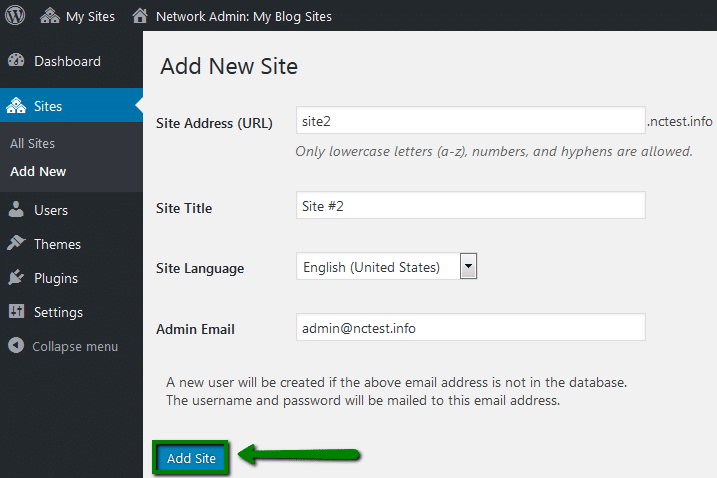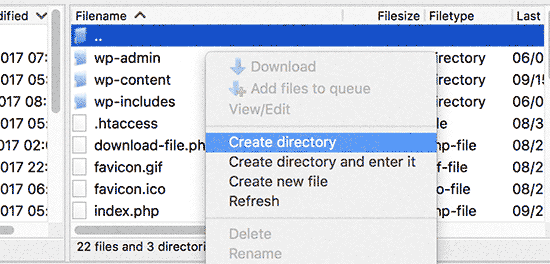Subdomain vs Subdirectory is two normally confusing terms. You may want to run multiple sites or want to run a test site and a live site. In all these cases the best thing to do is to create a subdomain. But if you wish to rank your website on Google from an SEO point of view, then creating a subdirectory will be your best bet as it is easy to set up. Let us discuss Subdomain vs Subdirectory.
Table of Contents
ToggleWordPress Multisite: Subdomains or Subdirectories?
At the point when you activate Multisite on your WordPress establishment, there are several things you need to consider, for example, whether you’ll allow your clients to make their own website, what themes and plugins you’ll make accessible on the network, and your registration settings.
In any case, the one choice that is trying to invert is whether to utilize subdomains or subdirectories for your network. Exchanging among subdomains and subdirectories is time-consuming and interesting – and something best kept away from.
Significantly, you take care of business during the first run-through.
In this post, I’ll assist you with that, by clarifying the contrasts between WordPress Multisite subdomain and subdirectory establishment. I’ll likewise take a gander at certain situations wherein you may require Multisite, and distinguish which subdomains and subdirectories may be better for each. I’ll likewise distinguish those situations where you must choose between limited options.
Subdomain vs Subdirectory
Let’s get started and know these terms one by one. In this article we will discuss few things about Subdomain and Subdirectory and Which one should you prefer between the two?
What is a Subdomain?

A subdomain can be referred to as a division of your domain where you can manage your existing site. It is a separate site that is connected to your main site. For example, you have a fitness blog, and now you wish to start selling some fitness equipment, you can create another website and link it to your main blog site. This website will be called a subdomain for the main site. A subdomain helps you efficiently organize your task.
If there is any section by the left of the root URL of the site, then such a site is a subdomain. For example, shop.abcsite.com is the subdomain of www.abcsite.com.
Websites mostly use a subdomain if they have sites that are entirely different from the main site or if they want to organize various types of data for their website.
Merits of having Subdomains:
- One of the most significant benefits of having subdomains is that if you wish to have two sites one staging and one live site and want Google to do not rank your staging site, you can easily resort to a subdomain. This way you can do all your work on the Staging site and can later push it on the live site when you are done.
- If you wish to sell your products in different countries having different languages then having a subdomain will be the best option for you.
- If your market is huge, then you can segment your market in these subdomains. You can also take the help of subdomains to target a specific market such as Food items, Groceries, Reading items, etc.
What is a Subdirectory?

A Subdirectory is like a subfolder of a website. As we arrange one big folder in different subfolders, similarly we arrange our website in subdirectories. For example, if you want to divide your website into different sections, one of them being a blog section. You will create a subdirectory called blog. A subdirectory is not distinct from your website. It’s a part of your website. Individual directories are located at the right of your website domain name such as www.abc.com/blog. Subdirectories are mainly small parts or segments of the main website that is not different from the main site.
Merits of having Subdirectories:
- The first and foremost benefit of the subdirectory is its part of the main website itself. Your focus just stays on one main site, and you can work hard to optimize that very well. This way you can easily rank your website on Google.
- Adding more content to the same website may make Google crawl more times than having various subdomains and adding content to it to make it fresh every time.
- You can also segment your data more efficiently on the same website instead of shifting to different subdomains again and again.
Domain Mapping
I referenced domain mapping above, domain mapping is extraordinary! It permits you to plan a full domain like example.com to example.com/subsite, it helps brand the site and is awesome if you foster your customer’s destinations on a multisite introduction, however, they need their own area to show as opposed to yours and who doesn’t need their own domain?
There are a few diverse domain mapping plugins however did you know since WordPress is 4.5+, domain mapping plugins is a native feature! That’s right; presently you needn’t bother with those insane complex plugins to map your domain.
What did you go with for your Multisite? Subdomains or Subdirectories? Have you lamented your choice or was it the most ideal decision you’ve at any point made for your site?
Use Subdomain or Subdirectory?
We understood one major thing that what are these subdomains and subdirectories but now we stumble upon yet another question as to what to choose between them. Should I use a subdomain for my website or should I limit it to a subdirectory? Let’s try and answer this question. In most cases, you should go by creating subdirectories as much as possible. Since subdirectories are better from an SEO point of view, they can make your website rank well in search engines.
On the other hand, if you want a staging website, and do not want to rank it in google then you can create a Subdomain since Google will consider it as a separate site. But on the other hand, creating a subdirectory is much more straightforward. You can create a number of them. You can also manage your subdirectories in Google Analytics in a much easier way than those subdomains.
If you want to run an online store along with your website, you can quickly create a subdirectory and run your Store in that. Thus it is beneficial to use a subdirectory over a subdomain.
Picking Between Subdomains and Subdirectories Needn’t Be Difficult
Exactly when you’re initiating Multisite to make your first network and you go over the option for subdomains or subdirectories, it can feel overpowering. Be that as it may, if you follow this aide, you ought to have the option to pick the right one for your network, both now and significantly. There are a couple of measures you should weigh up, yet if you require some investment to recognize which alternative is best for your network, then, at that point, it’ll save you the extensive interaction of exchanging sometime in the future.
Conclusion
So, that’s all about Subdomains vs Subdirectories. What’s your thought on this? I would be interested in hearing your opinion. Share your experiences regarding subdomain vs subdirectory in the comment section below.
Interesting Reads:








